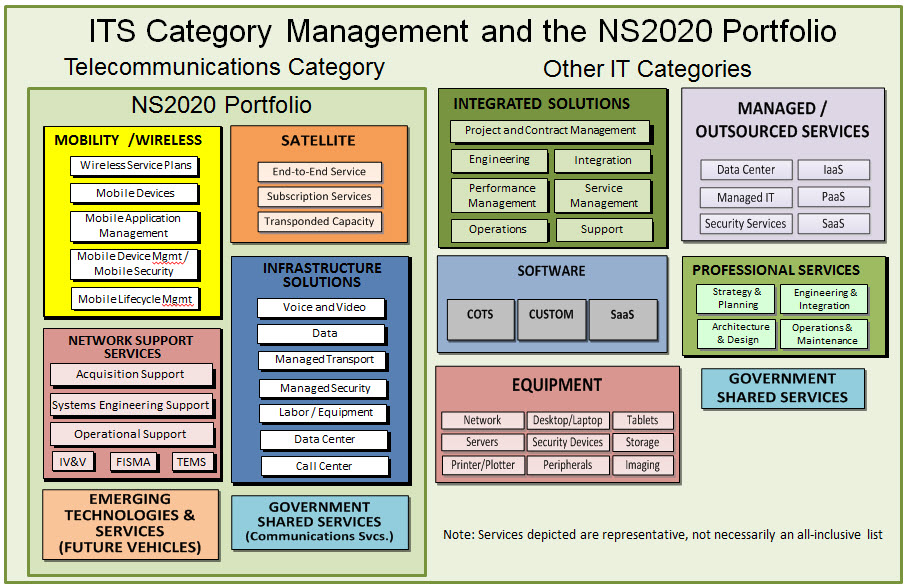By Kay Ely, Assistant Commissioner, Office of Information Technology Category
Just a few years ago you’d be hard pressed to find a tech startup with a GSA contract. But that’s a thing of the past, thanks in part to GSA’s innovative IT Schedule 70 Startup Springboard, which offers new and smaller IT businesses an easier and faster way to get a Multiple Award Schedule (MAS) contract.
What is the Startup Springboard?
An integral part of GSA’s Making It Easier initiative, the IT Schedule 70 Startup Springboard offers tech startups and young companies an alternative to the two-year professional experience requirement traditionally required of a company trying to get on a GSA Schedule.
With Springboard, prospective industry partners can use their executives’ professional backgrounds, key personnel’s project experience, and related financial documents to complete their IT Schedule 70 proposals.
Making It Easier
For years we heard from industry that the unique government requirement of two-years of corporate experience before becoming a schedule contractor caused problems for small businesses, and were particularly challenging for startups. Vendors had previously found it very difficult to navigate the complex path to getting on the schedule while customer agencies were not able to access the emerging technologies available in the market particularly from startups.
The Startup Springboard addresses our customers’ emerging technology needs by getting companies and their innovative solutions onto IT Schedule 70 and into the hands of customer agencies faster, increasing acquisition and operational efficiencies, providing greater opportunities for small businesses, and saving taxpayers money.
Success Stories
As of September 2017, 14 companies, 13 of them small businesses, have been awarded IT Schedule 70 contracts under the Startup Springboard initiative. Among them is Vricon, a provider of imagery solutions to the intelligence and military communities. Vricon had its first deal within a week of getting on IT Schedule 70: a $2 million contract with the U.S. Special Operations Command (USSOCOM). And with $5 million in sales to the government to date, the young company quickly helped us prove the Springboard really does what it was designed to do: make it easier for new and innovative companies to start working with government.
Security Solutions Technology (SST) had only been in business eight months before joining IT Schedule 70 through the Springboard program. SST provides IT and cybersecurity services and solutions to federal, state, and local government agencies and has more than $1.8 million in sales so far.
Springboard has also helped HUBZone and certified veteran-owned small businesses (VOSB) and woman-owned small businesses (WOSB) get on IT Schedule 70. See the complete list of businesses now on IT Schedule 70 that went through the Springboard process at the end of this blog post.
Bringing it All Together
The success of the IT Schedule 70 Startup Springboard and our other tools is a direct result of our commitment to addressing longstanding concerns of industry partners and government agencies. We’re addressing our customers’ emerging technology needs by getting companies — and their innovative solutions — onto IT Schedule 70 faster.
For general information about the program, visit the IT Schedule 70 Startup Springboard page.
The following companies have been added to IT Schedule 70 via the Startup Springboard since the program began in April 2016:
- Alpine Consulting Partners, LLC — providing computer systems design services
- Cambridge Federal, LLC — a HUBZone VOSB providing IT and Investigations and Security (I&S) Security: providing commercial IT equipment, software, and services
- Coffmatech — an economically disadvantaged minority woman owned small business (EDWOSB) providing commercial IT equipment, software, and services
- Concept to Integration Technologies,LLC — a service disabled veteran-owned small business (SDVOSB) providing commercial IT equipment, software, and services
- The Crevalle Group, LLC — providing commercial IT equipment, software, and services
- Nala Digital Solutions, Inc. — a SDVOSB providing commercial IT equipment, software, and services
- Planet Defense, LLC — a woman owned business providing commercial IT equipment, software, and services
- Resilient Solutions 21 LLC — providing commercial IT equipment, software, and services
- Security Solutions Technology ,LLC — a veteran owned a VIP-certified SDVOSB providing commercial IT equipment, software, and services
- Spathe Systems, LLC — an 8(A), small business, and SDVOSB-certified business providing commercial IT equipment, software, and services
- Tangent Technologies, Inc. — a woman owned SDVOSB providing commercial IT equipment, software, and services
- TrussWorks, Inc. — providing commercial IT equipment, software, and services
- Vricon, Inc. — providing commercial IT equipment, software, and services
Please follow us on Twitter @GSA_ITC and LinkedIn to join our ongoing conversations about government IT.
